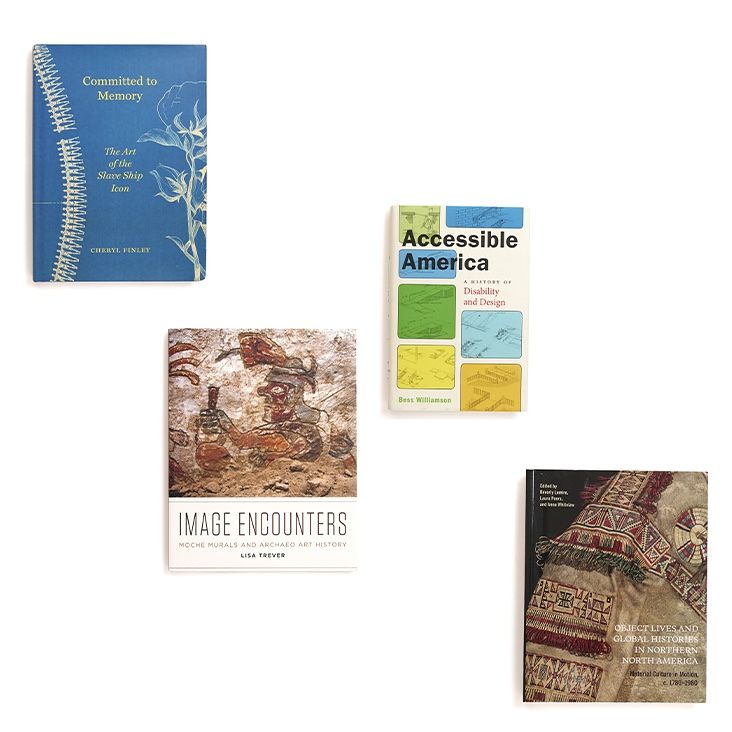Charmaine A. Nelson will present at the Mr. and Mrs. Raymond J. Horowitz Seminar on New York and American Material Culture on Tuesday, November 13, at 6 pm. Her talk is entitled “‘Of a Remarkably Down-Cast Countenance, and a Black and Copper Coloured Mixt Complexion’: Fugitive Slave Advertisements and/as Portraiture in Late Eighteenth- and Early Nineteenth-Century Canada.”
Found throughout the Transatlantic World, fugitive slave advertisements demonstrate the ubiquity of African resistance to slavery. While such newspaper notices have been exhaustively studied since the 1970s in the Caribbean, South America, and in the USA on a state-by-state basis, scholars of Canadian slavery have mainly studied the fugitive slave archive for other ends. In this talk, Nelson proposes the study of Canadian (Nova Scotia and Quebec) and Jamaican fugitive slave advertisements, alongside portraiture and genre studies as a means of comparing the visual dimensions of creolization in slave minority and slave majority sites of the British Atlantic world. Produced by white slave owners seeking to recapture their runaway “property,” standardized icons of enslaved males and females became a staple of such print advertisements. However, the more complex textual descriptions were also fundamentally visual and arguably comprise an archive of very dubious, unauthorized “portraits” that have sadly come to stand as “the most detailed descriptions of the bodies of enslaved African Americans available.” (Graham White and Shane White, 1995, p. 49*). Besides noting things like names, speech, accents, language, and skills, fugitive slave notices frequently recounted the dress (hairstyles, adornment, clothing, etc.), branding, scarification, mannerisms, physical habits, and even the gestures and expressions of runaways. This talk seeks to analyze the differences and similarities between “high” art representations of enslaved Africans and the textual descriptions of enslaved people’s bodies which became a staple of fugitive advertisements. Recalling fugitive slave advertisements as a form of visual culture, this talk positions them as one part of the colonial infrastructure and network (including slave owners, printers, and jailers) that sustained the racialized distinction between free and unfree populations.
Charmaine A. Nelson is a Professor of Art History at McGill University. She received her PhD in Art History from the University of Manchester (UK) in 2001. Her research and teaching interests include postcolonial and black feminist scholarship, Transatlantic Slavery Studies, and Black Diaspora Studies. She has made ground-breaking contributions to the fields of the Visual Culture of Slavery, Race and Representation, and Black Canadian Studies. Nelson has published six books including the edited book Ebony Roots, Northern Soil: Perspectives on Blackness in Canada (Cambridge Scholars Press, 2010), and the single-authored books The Color of Stone: Sculpting the Black Female Subject in Nineteenth-Century America (University of Minnesota Press, 2007) and Slavery, Geography, and Empire in Nineteenth-Century Marine Landscapes of Montreal and Jamaica (Routledge/Taylor & Francis, 2016). Her seventh book, Towards an African Canadian Art History: Art, Memory, and Resistance (Captus Press, in press, forthcoming 2018), will be the first to consolidate the field of African Canadian Art History. Her current research project juxtaposes fugitive slave advertisements, portraiture, and genre studies from Nova Scotia, Quebec, and Jamaica, to examine differences in the visual dimensions of creolization between slave minority and slave majority sites of the British Atlantic world. She has garnered several prestigious fellowships and appointments including a Caird Senior Research Fellowship, National Maritime Museum, UK (2007) and a Fulbright Visiting Research Chair, University of California – Santa Barbara (2010). In 2016, she was named as a Fellow of the Royal Society of Canada, College of New Scholars, Artists, and Scientists and in 2017–2018 she was the William Lyon Mackenzie King Visiting Professor of Canadian Studies at Harvard University.
*Shane White and Graham White, “Slave Hair and African American Culture in the Eighteenth and Nineteenth Centuries,” The Journal of Southern History 61, no. 1 (Feb 1995): 45-76.



